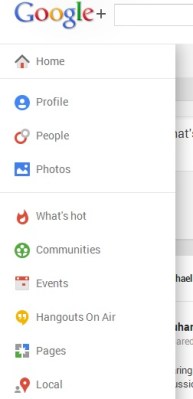Yet another service has succumbed to the all-consuming Google+, with Google announcing the imminent shutdown of Google Latitude next month.
The features that Latitude users enjoyed aren’t going away. People can still share their whereabouts with fellow users and “check in” to local establishments. But as of August 9, they’ll have to do it through Google+ instead of through Google Maps.
This is the opposite direction in which Google+ should be headed. Ideally, Google+ would layer itself on top of Google’s existing services, letting you share certain information (such as your location, in the case of Latitude) with the social circles of your choosing. Instead, Google keeps demolishing these services and stuffing their features into an increasingly bloated Google+.
“Circles” are Google’s way of letting you categorize the people you know into groups. For example, you could have a circle for family members, one for college buddies, one for co-workers and another for your closest friends. While Facebook also offers groups and other ways to limit sharing, it seems like an afterthought compared to Google+, which lets you tightly control the privacy settings on everything you do.
When Google+ debuted in 2010, I was optimistic that the underlying circles concept would weave its way into other Google services. Imagine, for instance, being able to share private YouTube videos with specific circles, or to invite a circle of co-workers to collaborate on a fully private document in Google Drive.

Three years later, the integration of Google+ has been inconsistent from one product to the next. Some products have been shut down and jammed into Google+ itself. Others have varying levels of Google+ integration, from thorough to nonexistent. Here are some examples:
- Calendar would benefit by letting you share appointments or entire calendars with your Google+ circles, but today it’s not possible. Google+, meanwhile, would benefit by letting you sync its “Events” with your Google Calendar. Right now, neither service talks to one another.
- YouTube and Drive have some basic Google+ integration, in that you can create a link to your video or file, and then share that link with your circles. But those links can technically be passed along to anyone, so there’s a risk of unwanted parties being able to see your stuff. There’s no way to share on Google+ from these services in a totally private way.
- Instead of making Picasa as good as it can be, Google has created a new photo editing and sharing service on Google+. Photos that you upload to Google+ appear on Picasa, but photos that you upload to Picasa don’t automatically appear on Google+. If you’re on one service and know people who use the other, it’s a mess.
- To find restaurants or other local businesses on your phone, you must use Google Maps. If you want to find them on your laptop, you must use Google+ Local. Same feature, two locations, another mess.
- Most notoriously, Google+ integration came to Google Reader in late 2011, but instead of complimenting the friending and following features that Reader already had, it replaced them entirely. Less than two years later, Google Reader was shut down for good, reportedly because Google is more interested in having people share directly on Google+ instead.
When you look at Google+ now, it’s clear that Google wants it to be a hub of activity for communication, events, photos and local happenings. The problem is that outside of Google+, that type of activity already exists, through services like Gmail, Calendar, YouTube and Maps. Instead of using social circles to enrich those services, Google is just poaching the best features and shoving them into the Google+ website and app, where they’ll be ignored or forgotten.
Latitude is the latest victim. If Google wanted to add Google+ integration, it should have offered sharing to circles as an option within Google Maps, instead of making people switch to the Google+ app just to get the same features. It makes me wonder how many other services will suffer the same fate. And I’m not the only one:

